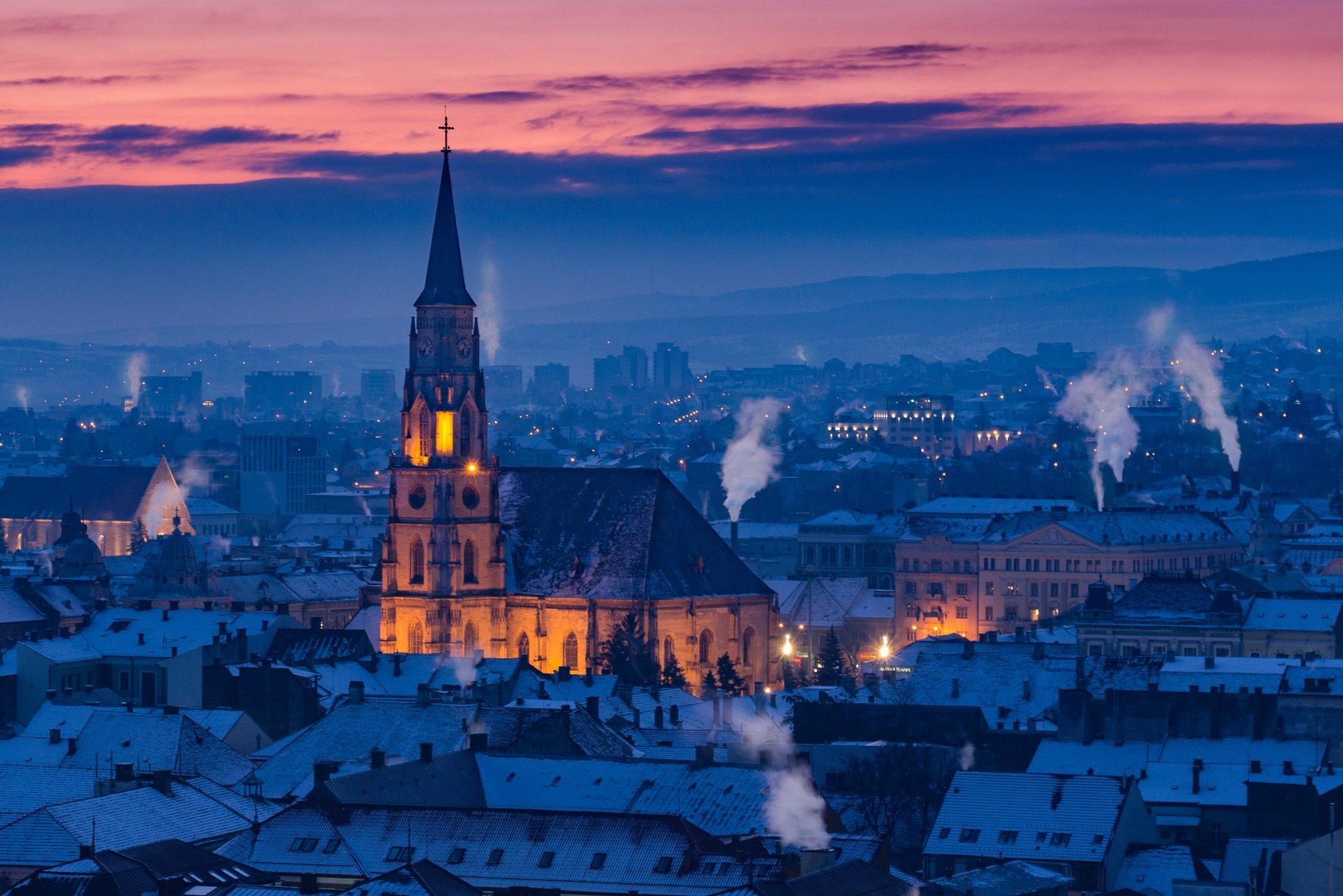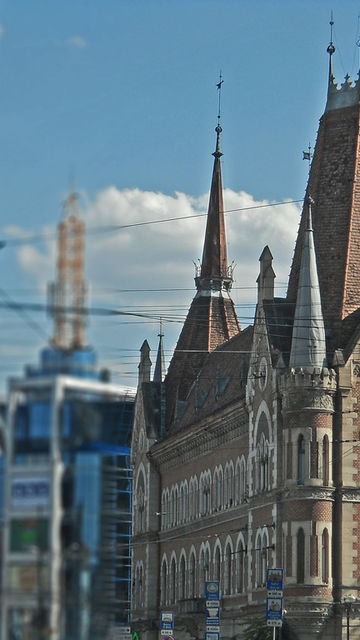
Love it or hate it, social media is here to stay, at least for the next few years at least. Instagram takes the prize for our favorite here at In Your Pocket, if only because the masses of photographs remind us on a daily basis just how beautiful this planet is. So what are the most Instagrammable spots in Cluj-Napoca? You’ve got monolithic churches, serene parks, thoughtful statues, and quite possibly the weirdest library in Romania. Get those smart phones out…
Museum Square
It has cycled through many monikers over the centuries, but what we now know as Museum Square has always been an energetic meeting place for the people of Cluj. It isn’t difficult to understand why, what with the cafes and bars that ring it, but there is an understated aesthetic elegance to the square that cannot be faked. The square is bookended by the Franciscan Church and the Carolina Obelisk, two of the oldest structures in the city.
Central Park
The public have had access to this glorious expanse of greenery since the middle of the 19th century, although the park has certainly evolved in the near two centuries since. Once a simple park on the southern bank of the Someșul Mic River, Cluj-Napoca’s Central Park is now an intricately detailed network of paths, alleys and walkways, all shaded by flora and refreshed by the artificial lake. Afternoon strolls don’t come much more picturesque or peaceful.
Mihai Viteazu Square
Mihai Viteazu (or Michael the Brave, if we’re sticking to English names) was a Romanian hero from the early part of the 17th century, one of the country’s great national icons and considered by many to be the first author of Romanian national unity. What he would make of his square is unknown, as this wide plaza in the centre of town is clearly a little different to your standard Romanian square. Traffic speeds down both sides as a gaudy piece of 20th-century architecture stands behind the statue of the great man. It shouldn’t work, but somehow it does.
National Theatre
Located in a beautiful Neo-baroque building on Avram Iancu Square, the National Theatre in Cluj-Napoca has been an integral part of city culture since its opening in 1906. Almost 1,000 culture vultures can cram into its main hall to enjoy a packed schedule of theatre and opera, so keep an eye on the schedule for upcoming performances. Failing that, stand outside and take a thousand photographs of one of the city’s most endearing buildings.
Cluj Arena
Opened in 2011, the Cluj Arena is a UEFA Elite stadium but you don’t need us to tell you that — just visit the thing. With a capacity of 30,201 (seated, and not including the near 1,500 executive suites) this is one of the premier football stadiums in the country, but there is more to the arena than 22 blokes kicking around an inflated leather ball. Concerts and festivals are also held in this most modern colosseum, including the near-iconic Untold Festival. The architecture is plenty interesting, an otherworldly design that may or may not be from the future. The stadium is found just to the west of the Central Park.
Zoological Museum
Hidden away within the Babeș-Bolyai University is one of the most unusual museums in Cluj, possibly even the wider Transylvania region. The Zoological Museum is our sort of place, by which we mean there is an absolute shedload of taxidermy here. We’re more than happy to spend entire days wandering around taxidermy owls, giraffes, antelopes and insects after all. The museum isn’t the easiest to find however — enter the Babeș-Bolyai University building, find the Biology Faculty on the first floor and then the door marked ‘Muzeul Zoologic’. You might have to knock. Do it.
Art Museum of Cluj-Napoca
The gorgeous Baroque Bánffy Palace is one of the most impressive buildings in Cluj-Napoca, but lurking inside is an even more astounding collection of human creativity and ingenuity. The Art Museum of Cluj-Napoca is one of the premier art collections in Transylvania, a mass of paintings, design and graphics covering the 1400s to the 20th century. Romanian art sidles up knowingly next to European contemporaries, with beauty (or interpretations of beauty) around every corner. Particular attention is paid to lesser known Transylvanian artists of centuries past. A delight.
National Museum of Transylvanian History
While the history of this museum dates way back to 1859, its current incarnation has been open to the public since 1937 and has gone from strength-to-strength ever since, chronicling the storied history of Transylvania. The permanent collections are handily organized in chronological order, going from prehistory through to the modern day, or at least something close to the modern day. The temporary exhibitions are also worth a gander or two, although as always they can be quite hit or miss.



